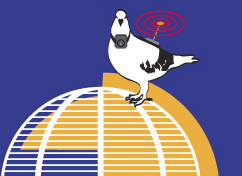Sara Diamond
Visitor

Moderator
| Posts: 8 |   |
Karma: 0
|
Community Domain Kick-Off - 2006/05/08 13:40
Community Domain Theme Kick-Off
Uniting/Untying Community Domain
The Community Domain Theme examines notions of community that begin with individuals, or “grass roots.” It links to the desire on the part of ISEA 2006 ZeroOne to engage socially diverse communities in the use of technologies, many for the first time. The theme is linked to the ongoing global diasporas with the resulting dispersal both of specific ethnic groups into locations and extensive hybridism around the world. The theme asks why specific locations develop powerful communities of interest and capacity, with San Jose and Bangalore playing the roles of technical innovation for several decades. The values in this section also appear to align with the mission of the San Jose Cultural Plan, of “Recognizing diversity, building quality of life, encouraging participation, fostering innovation, and building on success.” The theme embeds contradictory forces within the description and should result in lively debate.
As is appropriate, the papers in this section provide divergent perspectives on the nature, practices and analyses provoked by the term, “community domain”. Memorials are a core element of how communities construct themselves. Hamilton melds a number of theoretical sources, including Bourdieu, Hyssen, and Nancy to discuss “absence” rather than presence as a means of creating memorials. He argues for singular personhood in the face of inoperative community and explores a number of new media art works. Scholtz looks at the uptake of social networking from the perspective of the individuals and groups who continue to engage in this mass movement of cooperation, book marking, scientific co-discovery, shifting focus from enabling technologies to human factors. This shifts the role of artist to context provider. Nisi, Oackley and Haahr provides a case study of the Project of the Liberties where PDAs are used to gather shared memories and “physical manifestations” and re-enact these in local and ageographic contexts.
Troubling the Waters of Community:
One can argue that Lovinck expropriated the term, “community”, back into socially engaged creative new media. He linked community with public rights and access. After all, “community” had been thoroughly routed during the 1990s, understood to be the most important quality of commercial Internet success. Building community meant building enterprise. Community was a troubled word long before that—from activist roots it had come to stand in for post-war utopias in the West. Even worse, the model community became a form of control in the Dirty Wars in Guatemala and elsewhere. “Community” can function as a form of nostalgia, essentialism and protectionism, as Butler articulated in her early work on identity. In our work in this forum, we need to explore the ways that the radical qualities of identity, solidarity, social networks, are countered by the ways that community can enact essentialisms, closures and exclusions as Butler has pointed out in her early work. It can be a means of forming invisible power and cultural norms, or habitus, as Bourdieu proposes. On the other hand, it can also be a force for “minoritarian memory”, as Rosi Braidotti proposes, “the process of becoming by liberating something akin to Foucault’s “counter memory”: a faculty that instead of retrieving in a linear order specifically categorized memories, functions instead as a deterritorializing agency”.
Hence in our exploration of this theme, we will want to look at the ways that communities are located, the relationships of presence and absence, the ways that technologies mediate and structure local histories local community constructs the relationship between notions of the individual subject and collective subjects. We may want to consider the ways that human computer interaction science embeds knowledge and assumptions about individuals and their social processes into technologies and the ways, as Schultz proposes, communities use and change these assumptions in the use of technologies. We may want to consider trust as a core factor in the creation of community, both physical and on-line and what this implies about art practice. We may want to look at the actions of collaboration in social groups and the ways that cohesion and new forms of identity emerge, in part mediated by technology. Las Madres de Plaza de Mayo created presence out of absence through the force of their collective action, eventually achieving justice. We will want to explore the discourse of presence versus absence in the light of contemporary new media theory.
I look forward to our discussions.
|
